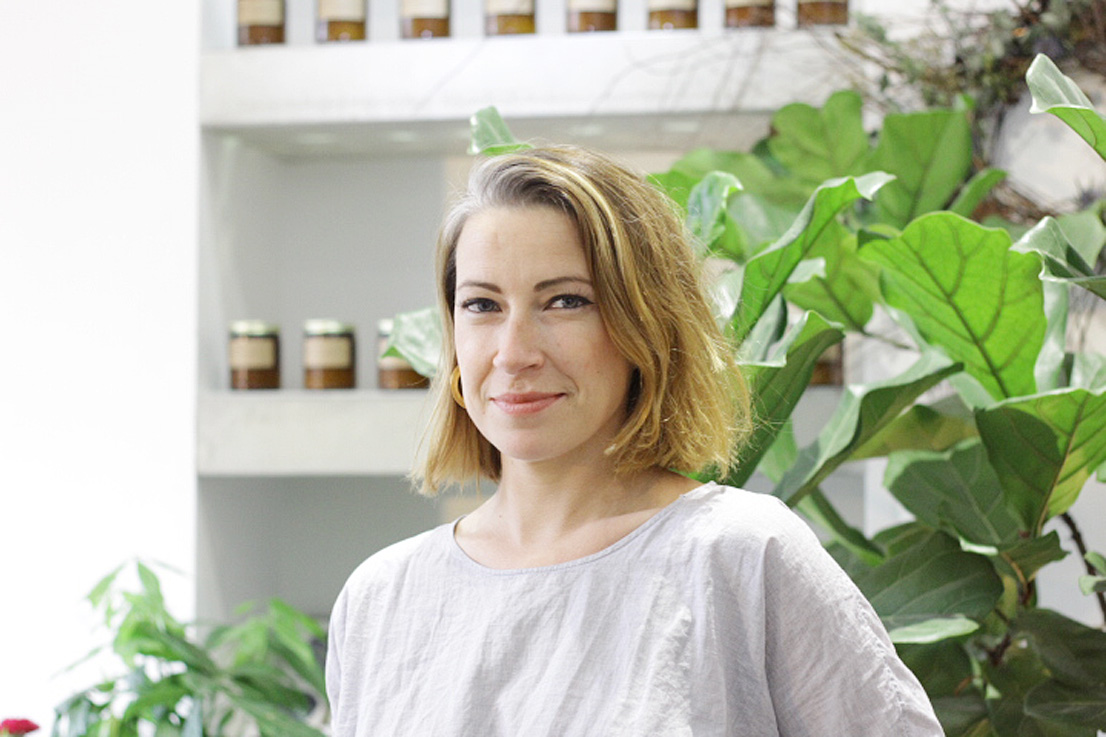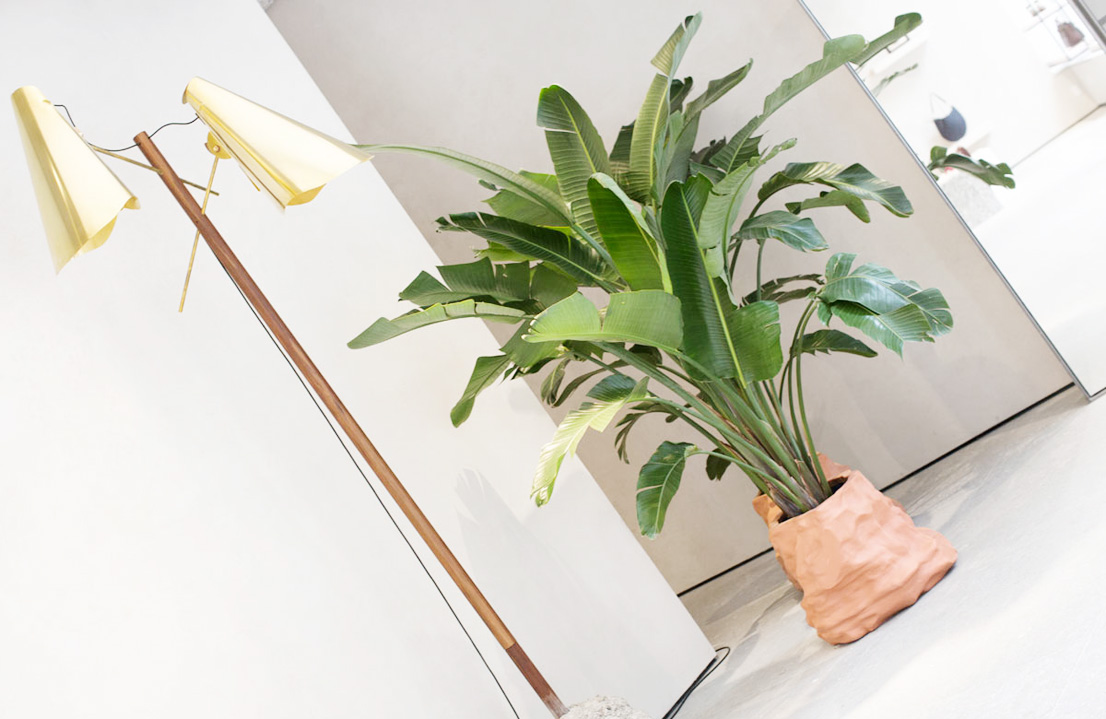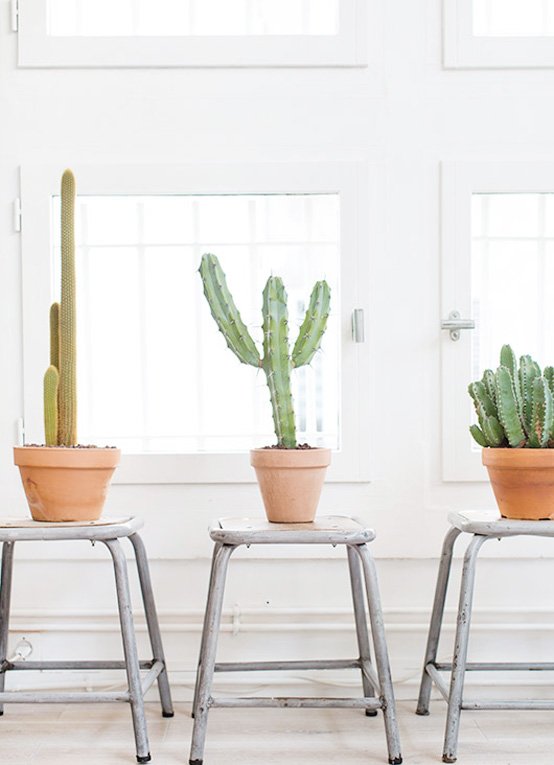At the risk of sounding like a country bumpkin, fresh air is hard to come by in London. I love this city, but having grown up in a field in Kent, I can recognise that our capital is hardly pollution free. But given that I won’t sacrifice the bright lights and overpriced pints of London in favour of my health, it’s time to start making my own countryside sanctuary within my own home.
I, for one, am not known for my green fingers. Every time I buy flowers I forget about them, letting them wilt until I feel enough shame over my domestically challenged self that I push them to the bottom of my bin. I have never committed to owning even a cactus, perhaps the most low maintenance of houseplants. But I can appreciate that with a well-greened home comes a certain bright, open atmosphere. The sense that you’re breathing cleaner air the minute you step through the door. It offers a respite from the overcrowded hustle and smoky bustle of central London.
Nik Southern, founder of florists Grace & Thorn, is a huge advocate for “greening up your gaff”. By opening up your home to some new houseplants, Nik says, “you are one step closer to the gods, with your air purity levels hitting a high”. Houseplants have attributes way beyond the decorative that should not be overlooked. Certain plants can absorb harmful pollutants and give your home a hassle-free detox. “These types of plants are powerful air cleaners and naturally remove pollutants found within your home, such as formaldehyde (carpets, upholstery, glues and paint), benzene (plastics, rubber and pesticides) and trichloroethylene (paint removers and adhesives).”
Nik’s advice is enough to make even me dig out my gardening gloves. So in a bid to have you following suit, we’ve compiled the ultimate guide to houseplants guaranteed to clean out your home, give your lungs a figurative hug and, above all, give you something to look at. Don’t be put off if, like me, you are perennially bad at keeping things alive. These plants are ideal for your home or office because they are all low maintenance. What’s not to love?
Peace Lily: Classified by most as one of the easiest houseplants to care for, the Peace Lily is a low-investment, high reward option. It requires a good amount of water and just a little sunlight in order to flourish, which isn’t too much to ask. The plant is known for absorbing acetone emitted by nail varnish remover and everyday cleaning products, so it is ideal for most households. All that the Peace Lily asks of you, aside from the generous hydration, is a light dusting regularly, because the plant needs to be kept dust free too maximise its potential.
English Ivy: Perhaps the most traditional on the list, English Ivy is a classic houseplant, but is not one to be underestimated. When grown indoors, ivy has amazing air filtering qualities and will absorb harmful pollutants such as formaldehyde. Don’t be fooled into thinking that ivy is too predictable, because this extremely versatile plant can be tamed and paired with a bright pot for added colour. Alternatively, allow the ivy to grow freely for a dramatic cascading effect when hung from a window. Ivy thrives in moderate temperatures and medium sunlight, but again this is a relatively low-key plant.
Aloe Vera: Everyone will be familiar with Aloe Vera as the Swiss Army Knife of houseplants. Not only does is sooth burns, heal cuts, form a key ingredient in almost all your skincare and act as a key ingredient in that juice cleanse you’ve been trying, but it also clears the air of the pollutants that come from our everyday cleaning products. Another relatively low maintenance plant, Aloe Vera thrives in bright rooms but doesn’t need direct sunlight, so it would make a great accessory to your bookshelf.
Boston Fern: Popularised by the Victorians, the Boston Fern is experiencing a bit of a renaissance in London because of its dramatic explosion of leaves, making it the ideal statement plant. As a native of the rainforest, these ferns love humidity and need a great deal of moisture, making the bathroom their ideal home. Don’t let this intimidate The main benefit of the Boston Fern is that it is known for soaking up the formaldehyde found in carpets, upholstery and paint.
Heartleaf Philodendron: The heart-shaped leaves of the philodendron will cascade nicely down your bookshelf, casting an understated figure. Because of its low maintenance nature, the philodendron is popular in offices and the homes of people who, like me, aren’t so hot on basic plant care. All it needs is a shady spot and well-drained soil, making it almost impossible to kill. They have the benefit of being particularly good at absorbing formaldehyde much like English Ivy and the Boston Fern, and will keep your air clean. Allow the stems to grow freely and the decorative vines will brighten up any room.



